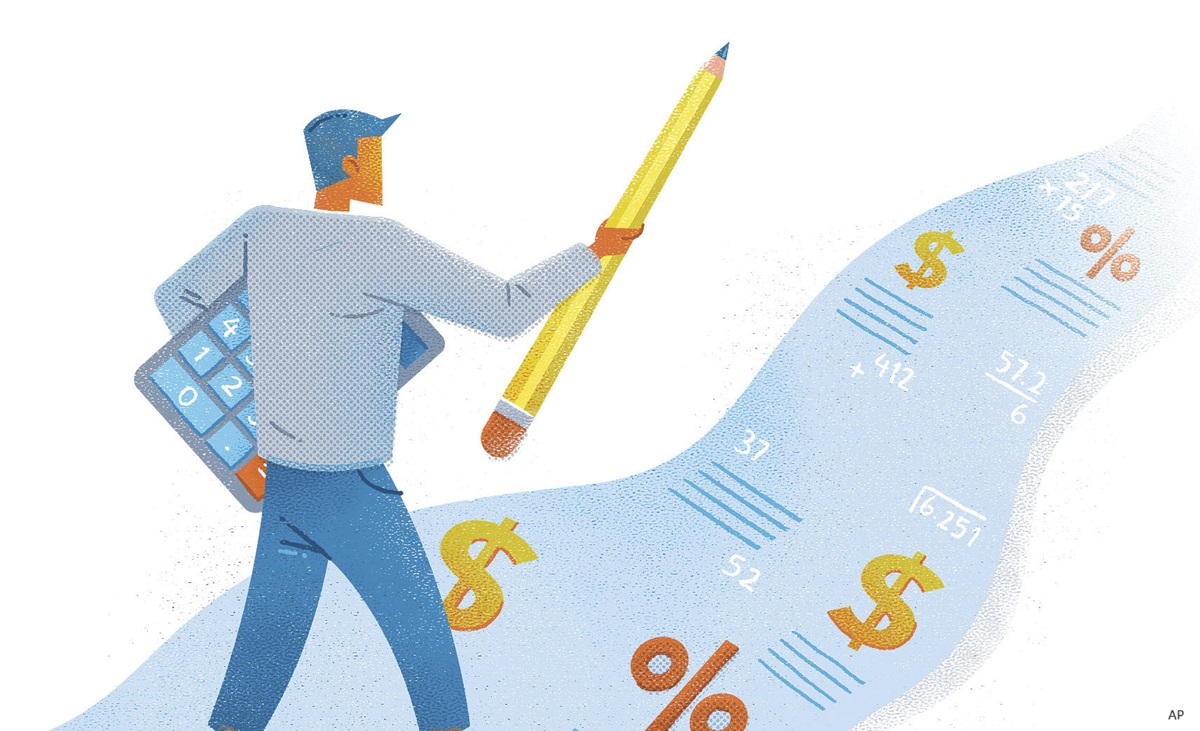
Editor's note: Read the latest on how the coronavirus is rattling the markets and what you can do to navigate it.
While the spread of the COVID-19 pandemic has been a severe hit to the economy and by extension to the corporate bond market long-time bond specialist Patrick O’Toole argues that it has created buying opportunities and the pain should be relatively short-lived.
“This downturn opens up, what economists call, a big output gap. That’s the difference between potential Gross Domestic Product [GDP] and actual GDP. That gap could take years to close, much like after the Great Financial Crisis of 2008-09,” says O’Toole, vice-president, global fixed income at Toronto-based CIBC Asset Management Inc. O’Toole is also one of the lead managers of the 5-star rated $4.8 billion Renaissance Corporate Bond Class F.
“There has been lots of stimulus this time, to help fill the gap, that has plunged the economy into what some say has the potential for a depression. But I call it a ‘flash depression.’ We expect a V-shaped recovery.”
Getting used to the new normal
The sudden laying off of millions of employees and closure of tens of thousands of companies is likely to be a short-run phenomenon. “The response this time has been much faster,” says O’Toole, an Ottawa native and 31-year industry veteran who joined CIBC in 2004. “The Federal Reserve has done in the last two weeks more than it did in the first year of the Great Financial Crisis. This showed that lessons were learned and then applied.”
Going forward, O’Toole adds, he believes that businesses will keep more money in emergency funding, consumers will start to deleverage and save more, and governments may regulate certain industries more closely.
“We will have a ‘new normal’ after the recovery. And ultimately GDP will snap back fairly sharply because of the efforts of central banks and governments. When there is a treatment or vaccine that will set the stage for a more broad-based recovery,” says O’Toole, who works within a 20-person team that oversees about $65 billion in assets. “This too shall pass. We will get back to some sort of normal.”
O’Toole credits the Bank of Canada for its rate cuts and announcement of a quantitative easing program, and the Federal Reserve plan to buy corporate bonds through the Primary Corporate Credit Facility, as ways to stabilize fixed income markets. Indeed, this week saw record amounts of new bond issuance in the U.S. as companies issued more than US$100 billion in new debt. “These measures do not mean we will avoid a flash depression. But it does mean it will be a flash, as opposed to a lasting decline in growth.”
Narrowing spreads
Credit spreads, or the difference between corporate bonds and government securities, have narrowed considerably in the U.S., thanks to central bank intervention. In the U.S., investment-grade spreads widened out to 373 basis points (bps) over government bonds of similar duration. “We are sitting at 302 bps now. But put it in perspective because the spread was only 93 bps in mid-February, before the correction,” says O’Toole.
In Canada, the spread for investment-grade bonds widened to 400 bps at the peak and is now 264 bps. That’s wider, says O’Toole, than the levels seen at the peak of the so-called Greece crisis in 2011 and the energy crisis in 2016.
O’Toole concedes that some Canadian companies have been dubbed “corporate zombies” because they have taken on a lot of debt, like counterparts in other countries. “The good news is that cash flows have been more than adequate, until now. Companies always have the option of turning off stock buy-backs or dividends to conserve cash. That’s what we are likely to see” says O’Toole.
Time to buy
The market decline has been painful, and Renaissance Corporate Bond Class F is down 7.5% year-to-date (as of March 27). Yet O’Toole argues that it sets the stage for attractive buying opportunities. “Credit spreads moving out so wide means the all-in yield is very attractive. But managers in Canada were hesitant. We have not seen the same sharp snap-back in credit spreads in Canada, as we’ve seen in the U.S. Part of the reason for that is investment managers are a little fearful they will have re-balancing flows.” O’Toole observes that fixed income managers may be selling bonds to provide cash to bring balanced funds back to target weights.
“More pain is certainly possible. One thing we know is that the stock market is likely to remain volatile,” says O’Toole. “And it will likely be reflected in credit spreads as well. We are looking at this [correction] as a great opportunity. We have seen credit spreads in the U.S. start to recover and that’s usually a leading indicator for Canadian spreads.”
From a strategic viewpoint, O’Toole has allocated about 82% of the fund to investment-grade bonds, and 18% in high-yield bonds. The latter component is somewhat underweight relative to the benchmark, and has helped the fund, says O’Toole. “We are cautiously looking at that sector and are adding instead to the investment-grade side.” Although the spread for U.S. high-yield bonds had lately narrowed to 926 bps, after it ballooned out to 1084 bps at the peak, O’Toole is keeping his powder dry, for the moment.
On a sector basis, the portfolio has 27% in financial services, 23% energy, 15% industrials, 15% communications, and 12% real estate. About 86% of the fund by weight is in Canadian securities, and 14% U.S. The fund has a duration of 6.2 years, or slightly below the benchmark. Significantly, the fund has a yield of 5.5%, which is almost double that of the 3% yield promised to investors.
The portfolio is highly diversified as it has over 500 securities from 225 issuers. One favorite name is Ford Credit Canada, the financing arm of Ford Motor Co. of Canada. “It’s recently been downgraded from investment-grade to the high-grade sector, which caused concern for some people. But this is a company that has strong cash balances and strong liquidity. Early this week the yield was almost 10%, and people said, ‘This is almost a gift.’ We are comfortable with our exposure.” The BB+ rated bond, maturing in 2024, is yielding 7%.
Another favorite is Enbridge Inc., a leading pipeline. “It has utility-like cash flows, which yields nearly 8%. It was screaming at us to increase our weight in.” The 2028-dated subordinated debt is yielding 7.5%.
The fund has been hurt by its high-yield bond weighting, since year-to-date it underperformed the Canadian Corporate Fixed Income category by 2.56%. But it has outperformed on a five and 10-year basis. Over five years, it averaged 1.77%, or 0.29% better than the peer group. Over 10 years, it averaged 3.68%, or 0.12 percentage points ahead of the peer group.
Every crisis is different
O’Toole says every crisis is different, yet this one seems to be the most extreme, in terms of its damage to economic growth. “But it will be more short-lived. It’s not as extreme as the hit to the corporate bond market [in 2008-09],” says O’Toole, adding that credit spreads widened out considerably more in the Great Financial Crisis.
The quick and very sharp response from central banks and governments will be instrumental in restoring confidence. “That’s why we’re calling it a ‘flash depression,’ or a hard dip in growth,” says O’Toole. “We’ll bounce back when the all-clear is given. And these episodes provide us with really good opportunities to capture returns over the next few years that did not exist previously.”




















